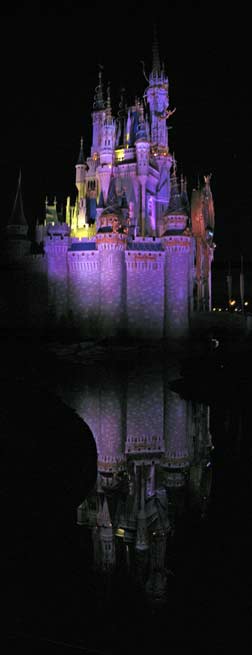

 We went to Disney not out of an intense need to go—we have had our fair share of cynical thoughts about Disney—but with the knowledge that it would be probably the best wheelchair-friendly destination in the world, and that Jon would probably get a fair amount out of it. And we are very glad we did, because he got so much more than we expected.
We went to Disney not out of an intense need to go—we have had our fair share of cynical thoughts about Disney—but with the knowledge that it would be probably the best wheelchair-friendly destination in the world, and that Jon would probably get a fair amount out of it. And we are very glad we did, because he got so much more than we expected.
So let’s debrief on what we’ve learned about Disney:
Disney isn’t about creativity or art. A movie isn’t the end product any more, it’s just the start of the process of making a life-size character greeters, a ride, a hotel theme, and a hundred billion T-shirts and things made of plush. And the logistics of seamlessly moving tens of thousands of people in that manufactured culture.
At any of the parks—but especially the Magic Kingdom—all we could think about was the ten of thousands of sociology experiments that could be done, or probably were in fact being done, by the company. This is herd behaviour on a massive scale. When they stake out a parade route, it starts almost two hours in advance and progresses with an intricate precision that gradually channels and redirects the mob, eventually using a pre-parade platoon of vendors peddling bunches of light-up trinkets to push the last few stragglers off the route. And then, immediately after the parade passes a team whips past, making the rope and poles instantly disappear.
At the budget hotels, there’s a couple of customs involving childrens’ stuffed animals. If the child chooses, they can pose them on the inside window sill between curtains and window, for passers-by to see. Very cute. However, if the toys are just strewn around the room or on an unmade bed, upon your return you’ll find them posed in little tableaus on the child’s now-made bed. Jon came home the second night there to find his Bear doll reading a Welcome-to-Disney certificate (commemorating his first time at the resort). The next day, Bear was cuddling Jon’s new Totoro doll on his lap. How do you instill this culture—for lack of a better word—universally amongst your cleaning staff?
David marvelled at the creation of everything in every park, the minutiae, the craftsmanship. What is built of real materials, what isn’t, and how it is distressed post-construction to create the perfect look. The beautiful fountain outside the lobby of the Hollywood Tower Hotel was painstakingly poured and beautifully tiled, then crushed, cracked and dirtied, the plants nearby, leafy but tattered, the velvet ropes that guide you are dusty and worn on top. Gorgeous. All for a three-minute thrill-ride that was inside. And to be noticed by the millions lined up for it.
Totally artifical, but all-encompassing while you’re in it. Patti, a veteran of Disney, had warned us about the merchandising, but nothing can prepare you. As Laura says, it was so brazen, so larger than life, that there was ultimately no arguing with it; all you could do was admire the staggering scale on which it was done as an awesome exercise in marketing.
The culture is so all-consuming that Patti also warned that:
1) You are going to buy souvenirs. You won’t be able to avoid it.
2) Choose wisely. There are so many things in the parks that fit right in there, but nowhere else. It’s like a kind of camouflage. Something that seems subdued—and even tasteful—in an environment that features giant walking cartoon characters and six-storey-Mickey-wizard-hats, may actually cause irreparable harm to the eyes and psyches of unsuspecting civilians anywhere else on the planet.